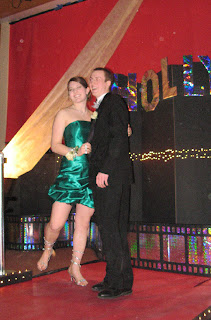AAPA National Conference

There are nearly a dozen sessions to choose from every hour, starting at 6:30 in the morning and going until 8:00 at night. Topics cover just about everything in family practice, as well as lots of surgical and sub-specialty areas. Sometimes it is difficult to choose. I’ve attended lectures on early detection of ovarian cancer, management of animal bites, neurologic complaints in primary care, skin cancer, atypical presentations of disease in the elderly, management of female pelvic floor dysfunction, use of hyperbaric oxygen in non-healing wounds, new treatments in rheumatoid arthritis, wilderness medicine, working with people who self-harm, acute knee injuries in sports, treatment of interstitial cystitis and chronic pelvic pain…and on, and on, and on. The lecturers have generally been quite good, and at this point my brain is just about stuffed.
One of the things I love about PA conferences, as compared to MD conferences, is the very “hands-on” approach. The focus is on clinical relevance, without a lot of dense slides and droning on about this study and that study and endless discussion of minutia (zzzzzzz…). One of the things I love about this particular conference is how empowering it feels to be in the midst of over five thousand PAs from all over the country. PAs are now licensed to practice, and have some form of prescriptive privilege in all 50 states. For a profession that only began some forty years ago, that is quite an accomplishment. Attending this conference with so many of my colleagues reminds me that I am proud to be a PA!
One of the highlights of this trip was getting to meet two of my favorite bloggers. The wilderness medicine lecturer was Dr. Paul Auerbach, author of the gold standard textbook Wilderness Medicine, as well as the blog Medicine for the Outdoors. He has left a comment on Tundra Medicine Dreams before, so I hoped to be able to meet him. He gave three successive lectures and was surrounded by people asking questions after each one. I did manage to introduce myself and shake his hand, but there was no time to actually talk, which I regretted.
The other blogger I was delighted to meet and actually spend a few hours with was Dr. Dino from Musings of a Dinosaur, and family Darling Spouse, Jock and Fledgling, and the Rolling Peke. My niece had a great time playing Frisbee with the sons and Dr. Dino and I had lots to talk about. Did you ever meet someone and feel instantly like you had known them forever? That's what it was like. My personal interpretation is that we knew each other in a previous life. Instant connection. Dr. Dino is a delightful individual, and just as salty in real life as in the blogosphere. Add some yummy barbequed ribs, beer from the local microbrewery, and three purr-bucket kitties, and you have one fun afternoon. And to put all your minds at rest, Dr. Dino does not have scales or green skin!
The conference wraps up tomorrow, and then I’m headed back to cooler, drier climes. The puppies have probably doubled in size during my absence. And soon it will be time to go salmon fishing. The first kings are already coming up the river. Yummmmm, fresh salmon! I can’t wait.































